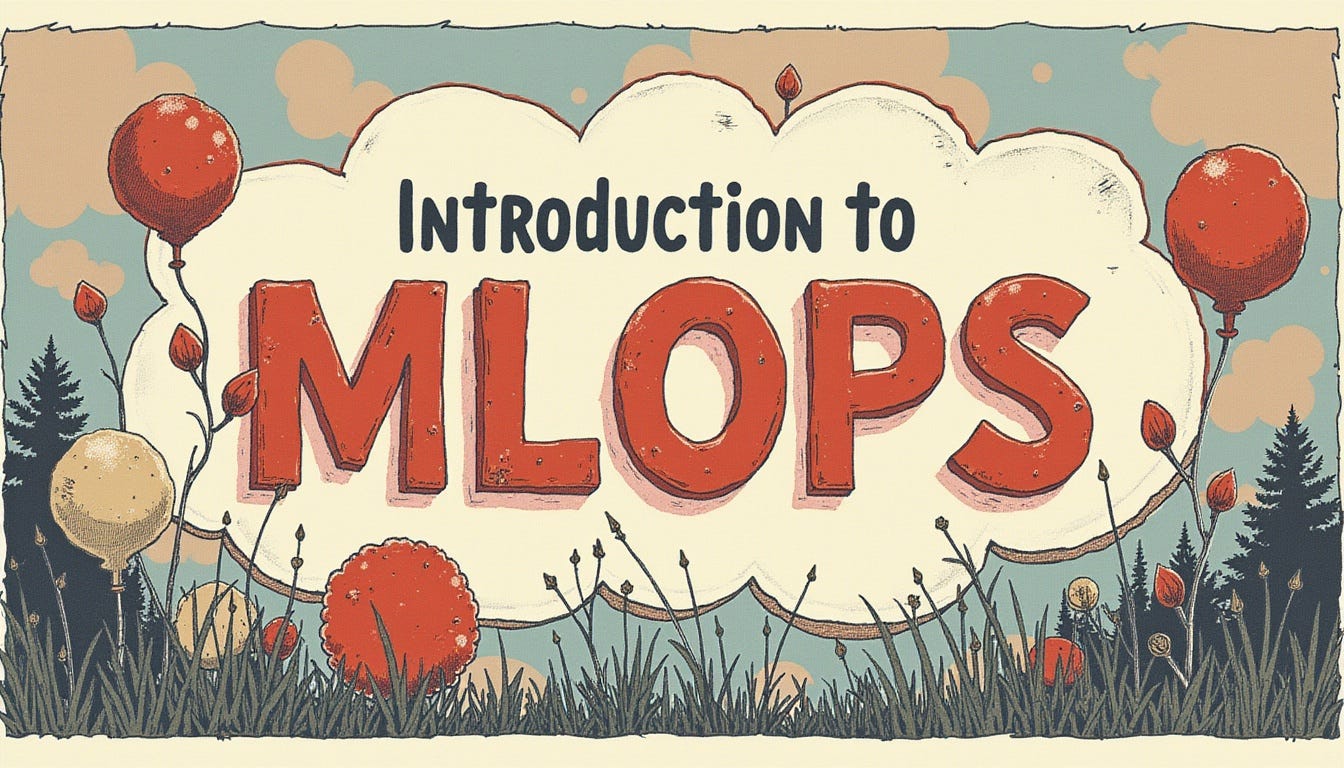MLOps: A Comprehensive Introduction
Streamlining the Machine Learning Lifecycle from Development to Deployment
MLOps, or Machine Learning Operations, is a methodology that combines machine learning with DevOps principles to automate and streamline the lifecycle of ML models. It emphasizes collaboration between data scientists, engineers, and IT operations teams to ensure that ML models are reproducible, scalable, and maintainable in production environments.
Why is MLOps Important?
Scalability: MLOps enables efficient scaling of ML models across various environments, including local, cloud, and edge deployments.
Reproducibility: It ensures that models and data pipelines can be reproduced exactly as they were developed.
Automation: MLOps automates repetitive tasks such as retraining, testing, deployment, and monitoring.
Model Lifecycle Management: It provides a framework for managing and maintaining models throughout their lifecycle, including performance monitoring and drift handling.
Collaboration: MLOps fosters collaboration among cross-functional teams, including data scientists, ML engineers, and DevOps, for improved productivity and smoother workflows.
Evolution of Machine Learning Operations
Traditional ML Development: In the early stages, model development was a manual process with data scientists focusing on experimentation, model selection, and accuracy, with less emphasis on scalability, automation, or deployment.
Introduction to DevOps Practices: DevOps principles like continuous integration (CI) and continuous delivery (CD) began to be adopted in ML workflows, marking the beginning of MLOps.
Shift to Modern MLOps: As organizations scaled their ML capabilities, the need for automated workflows, better monitoring, and reproducibility became crucial. Modern MLOps focuses on bridging the gap between development and production, ensuring models are continuously integrated, tested, deployed, and monitored.
Key Concepts in MLOps
Versioning:
Data Versioning: Tracking changes in datasets used for training and testing models.
Model Versioning: Keeping track of different versions of ML models.
Code Versioning: Using Git to manage changes in the code.
Automation:
Automated Model Training: Automatically retraining models based on new data or performance metrics.
Automatic Deployment: Using CI/CD pipelines to automatically deploy models to production.
Monitoring:
Model Performance Monitoring: Tracking accuracy, latency, and other performance metrics of models in production.
Concept Drift Detection: Identifying when a model's performance degrades due to changes in data patterns over time.
Logging: Collecting logs related to model inference, system performance, and errors for debugging and auditing.
MLOps vs. DevOps
Similarities:
Both focus on automating workflows to reduce manual effort.
Both foster collaboration between development, operations, and other stakeholders.
Both share a focus on creating CI/CD pipelines that automatically test and deploy code or models.
Differences:
DevOps manages code, while MLOps manages code, data, and models.
MLOps emphasizes experimentation with hyperparameters and model architectures, which is less prominent in traditional DevOps.
MLOps requires monitoring models for both performance and concept drift, whereas DevOps primarily focuses on system uptime and performance.
Hands-On: Setting Up a Basic MLOps Project Structure
To set up a basic MLOps project structure, follow these steps:
Set up Version Control using Git:
Install Git on your machine.
Create a new directory for your project.
Initialize a Git repository.
Create a basic file structure, including folders for data, models, notebooks, and source code (src).
Add your files to Git and commit the changes.
Set up Docker for Containerization:
Install Docker on your machine.
Create a Dockerfile.
Specify the base image, working directory, and dependencies.
Copy the code and define the command to run the model training script.
Create a requirements.txt file with the necessary libraries.
Build the Docker image.
Run the container.
Implement Basic Experiment Tracking with MLflow:
Create a virtual environment.
Install MLflow.
Create a training script (e.g., train.py) that trains a basic ML model and logs the experiment in MLflow.
Load data, split it into training and test sets, and train a model.
Log the accuracy metric using MLflow.
Run the training script and view the MLflow UI to see the logged metrics.
Create a Basic Monitoring Setup:
Import the logging module in Python.
Add basic configuration for logging, including the logging level, format, and handlers.
Specify a file handler to log events to a file (e.g., mlops.log).
Add logging statements at various points in your code, such as before loading data, after loading data, and during model training and prediction.
Run the script and check the log file for the logged events.
Conclusion
This article provides an introduction to MLOps, covering its importance, evolution, key concepts, and differences from DevOps. Following the hands-on steps, you can set up a basic MLOps project structure with version control, containerization, experiment tracking, and monitoring.


